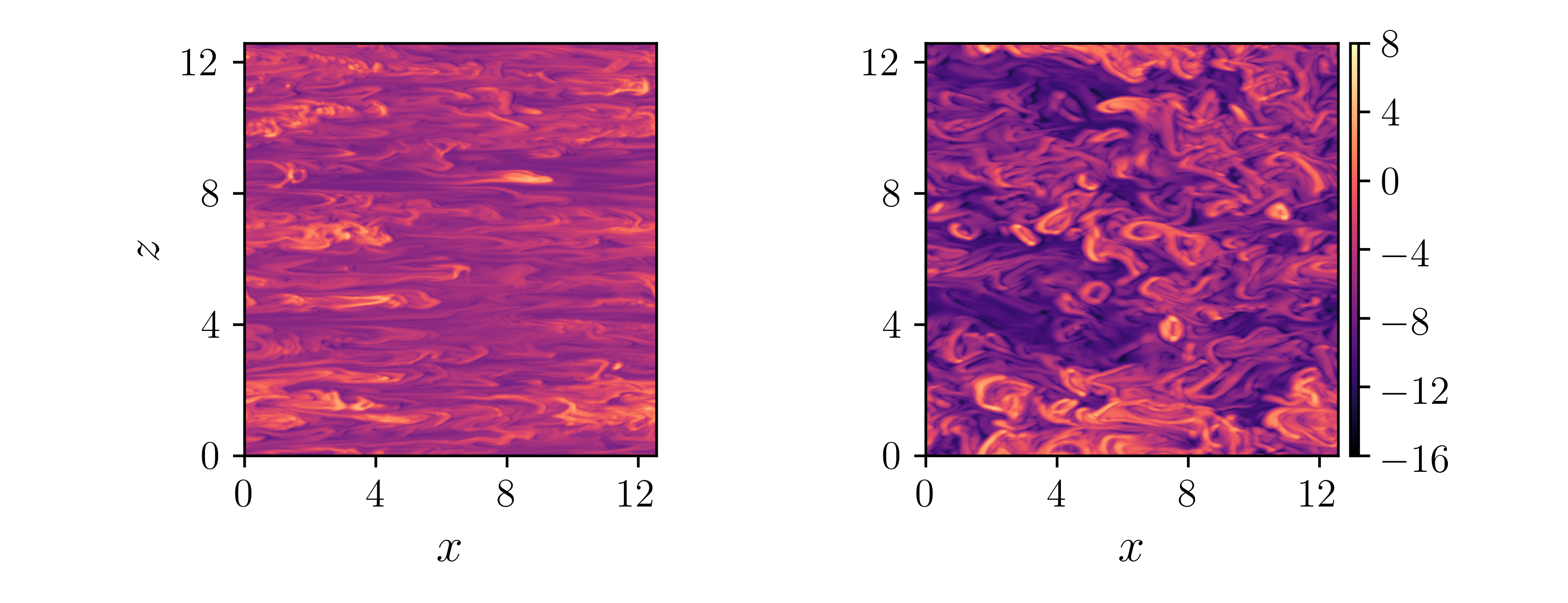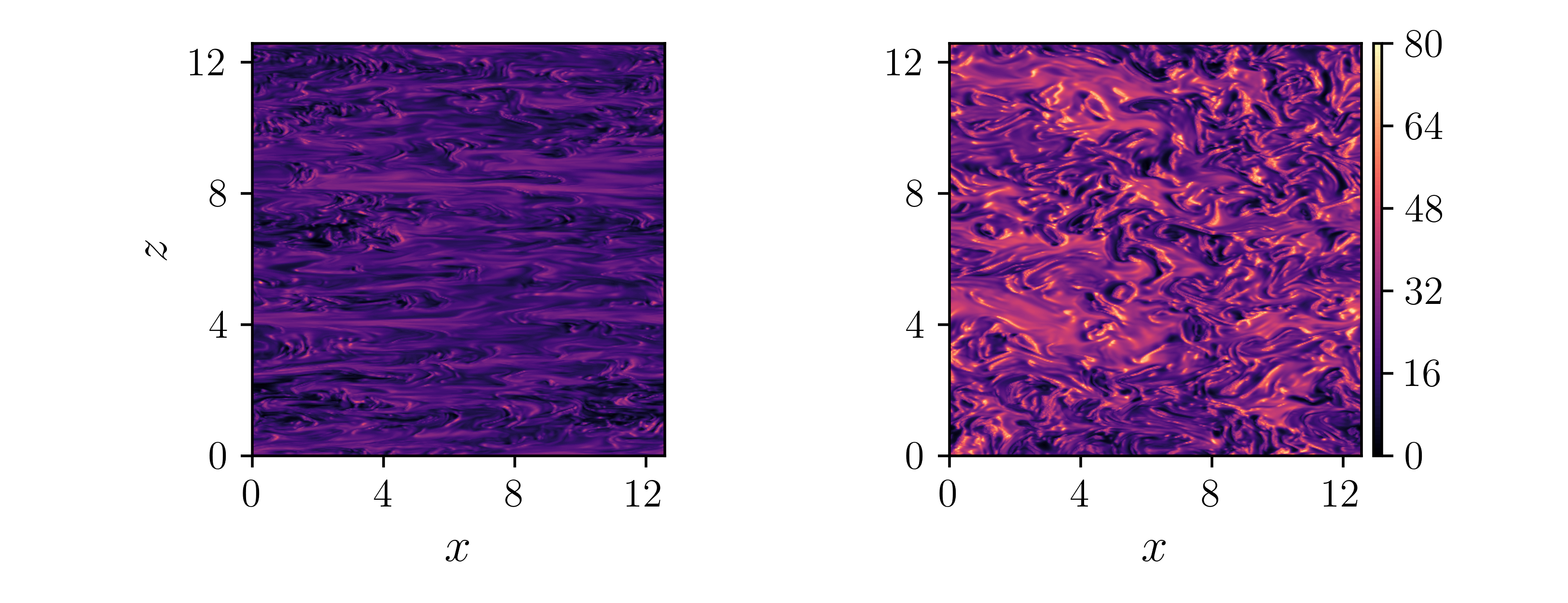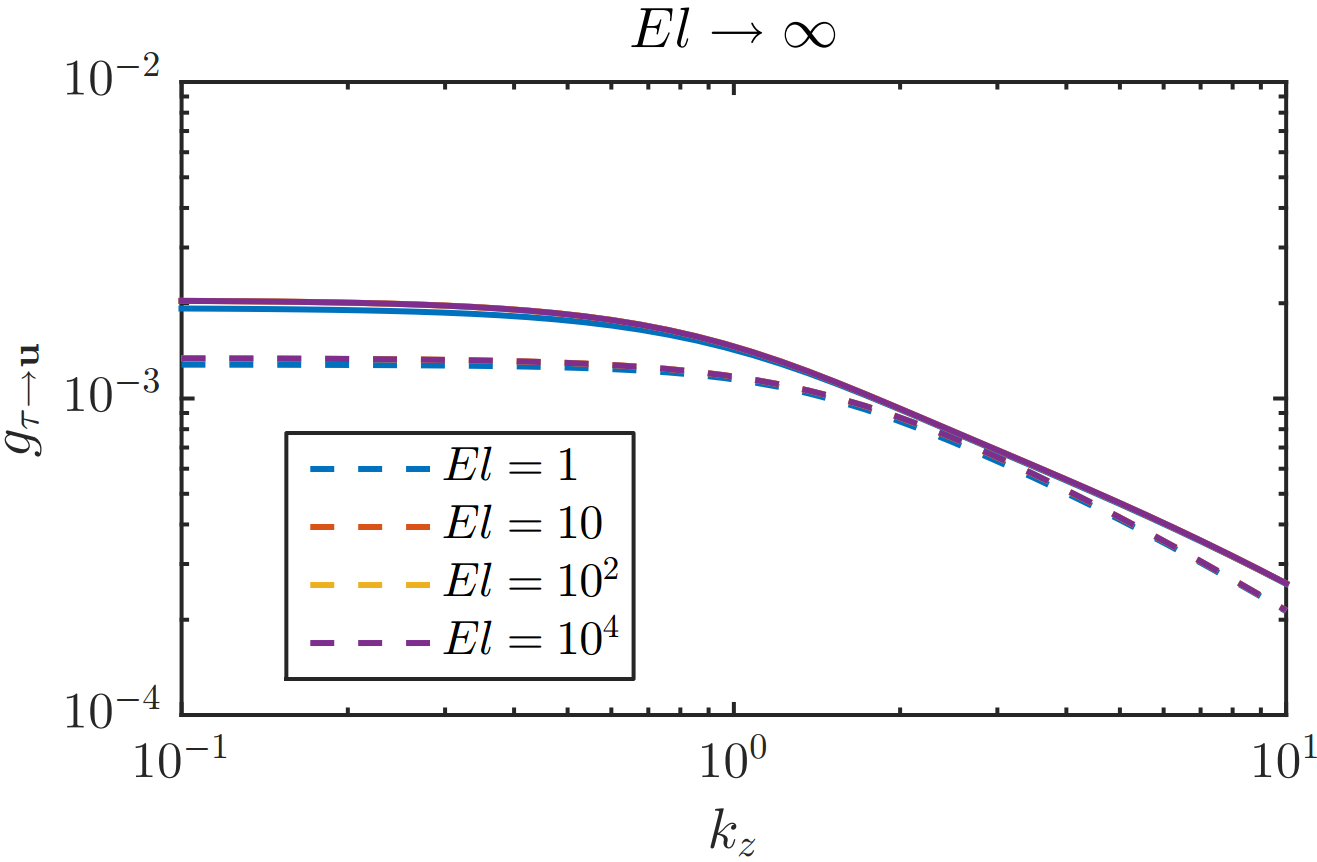
Hello and welcome!
I am a graduate student at the Johns Hopkins University in charming Baltimore, Maryland. I've put up details about my research, my publications, and other activities here.
I am broadly interested in fluid dynamics, complex fluids, and turbulence with a particular emphasis on using mathematical and numerical approaches to fundamental problems.
If you need anything that is not available on the website, or have a question/comment, please drop me a line at [firstname]h at jhu dot edu. Thank you for visiting!—Ismail Hameduddin (April 2, 2018)
The geometric decomposition of the conformation tensor


Turbulence theory for Newtonian flows developed over the last century cannot be directly extended to viscoelastic flows because in these flows the positive-definite conformation tensor appears as a state variable, and the set of positive-definite tensors is not a Euclidean space. In particular, the twin unresolved problems of defining a physically meaningful fluctuation tensor and formulating mathematically sensible scalar measures to quantify the turbulence intensity in the fluctuation tensor have both stymied the field of viscoelastic turbulence. I developed a method to define a physically meaningful fluctuating conformation tensor, as an alternative to the classical Reynolds decomposition, and used the non-Euclidean geometry of the set of positive-definite tensors to formulate mathematically consistent scalar measures to evaluate the turbulence intensity in the fluctuating tensor. As a result of my work, we now have a way to quantitatively analyze fluctuations in viscoelastic turbulence, paving the way for understanding the dynamics of turbulence in these flows as well as for turbulence modelling.
The figures shows isocontours of the scalar measures I developed in the near-wall region (left column) and at the centreline (right column). The top row shows the logarithm of the ratio of the instantaneous conformational volume to the volume of the mean conformation, and the bottom row shows the squared geodesic distance of the instantaneous conformation tensor from the mean conformation tensor. © 2018 Cambridge University Press.
Hameduddin, I., Meneveau, C., Zaki, T. A., and Gayme, D. F., 'Geometric decomposition of the conformation tensor in viscoelastic turbulence', J. Fluid Mech., vol. 842, pp. 395--427. DOI: 10.1017/jfm.2018.118. arXiv:1803.07619 [physics.flu-dyn].
Perturbative expansions of the conformation tensor in viscoelastic flows
Small perturbation assumptions, linear and weakly nonlinear expansions, provide a powerful simplifying framework to study flow dynamics. The classical approach assumes the perturbed variable is a Euclidean space quantity. However, because the positive-definite conformation tensor in viscoelastic flows lives in a non-Euclidean space, a brute application of this approach is problematic, e.g. finite-amplitude perturbations may yield physically unrealizable conformation tensors, and due to a lack of a norm, the magnitude of a perturbation cannot be assessed. I addressed these problems by generating perturbations via a series of material deformations, which can then be suitably approximated in the small deformation limit to yield a physically meaningful perturbation expansion of the conformation tensor. As a result, we now have means to understand perturbations to positive-definite tensors and to relate them to physical deformations. The smallness of a deformation is defined with respect to a mathematically well-defined metric on the manifold of positive--definite tensors, thereby resolving the problem of assessing the magnitude of perturbations. In the case of linear perturbations, the approach reveals the correct Hilbert space structure to be used in analysis.
Scaling of amplification of disturbances in viscoelastic flows

Laminar wall-bounded Newtonian shear flows are known to be exceedingly sensitive to external disturbances due to the non-normal nature of the linearised operators. In fact, this sensitivity can lead to transition to turbulence below the critical Reynolds number (Re) - a phenomenon known as bypass transition. This situation extends to the viscoelastic case, where the polymers introduce exciting complexities which have not been fully understood yet. It is thus of the utmost importance to quantify the sensitivity of such flows to external disturbances. We mathematically derived the scaling, with Reynolds (Re) and Weissenberg (Wi) numbers, of the amplification of exogenous stochastic disturbances (so-called energy amplification) in such flows in the asymptotic limits of weak/strong elasticity (El=Re/Wi). For example, we found that in the limit of strong elasticity, the kinetic energy amplification due to disturbances in the polymer stresses scales as Wi3. This scaling is analogous to the Re3 scaling in the limit of weak elasticity, and is representative of a wider symmetry between weak and strong elasticity that our work revealed. The figure shows the direct/numerical calculation of kinetic energy amplification due to disturbances in the polymer stresses normalised by Wi3 as a function of spanwise wavenumber (kz), with El varying over four orders of magnitude. The dashed lines are plane Couette flow, and the solid lines are plane Poiseuille flow. The collapse of each set of lines demonstrates excellent agreement between our theory and the numerical calculation.
Hameduddin, I., Zaki, T. A., and Gayme, D. F., 'Scaling of energy amplification in viscoelastic channel flow'. arXiv:1612.06830 [physics.flu-dyn].
Velocity field and normal polymer stretches in turbulent flow of a FENE-P fluid
The initial condition is a Newtonian turbulent velocity field with identity conformation tensor. The viscoelastic flow eventually relaminarises. The velocities in the streamwise (x), wall-normal (y) and spanwise directions (z) are given by u, v, and w, while Cxx, Cyy, and Czz are the square polymer stretches normalized by the square thermodynamic equilibrium polymer chain length. The time is normalized by the convective time. The flow is periodic in x and z, with solid walls at y=0 and y=+2. This was simulated using our in-house computational fluid dynamics (CFD) code; the conformation tensor solver was jointly developed by me and Dr. Sang Jin Lee, and implemented in FlowDNS — a CFD tool used in Professor Tamer A. Zaki's group at Johns Hopkins University.
The movies shows quenching of turbulent fluctuations by slowly relaxing polymers over 75 convective time units. The movies are for a wall-parallel (x-z) plane at y = 0.079, corresponding to y+=15 (friction units). Left-hand side is u, and right-hand side is Cxx.
Turbulence
- Hameduddin, I., Meneveau, C., Zaki, T. A., and Gayme, D. F., 'Geometric decomposition of the conformation tensor in viscoelastic turbulence', J. Fluid Mech., vol. 842, pp. 395--427. DOI: 10.1017/jfm.2018.118. arXiv:1803.07619 [physics.flu-dyn].
- Hameduddin, I., Gayme, D. F., and Zaki, T. A., 'Perturbative expansions of the conformation tensor in viscoelastic flows', J. Fluid Mech., (under review)
- Hameduddin, I., Zaki, T. A., and Gayme, D. F., 'Scaling of energy amplification in viscoelastic channel flow'. arXiv:1612.06830 [physics.flu-dyn].
Control
- Hameduddin, I. and Bajodah, A. H., 'Nonlinear generalised dynamic inversion for aircraft manoeuvring control', Int. J. Control, vol. 85, no. 4, 2012, pp. 437-450. DOI: 10.1080/00207179.2012.656143.
[firstname]h at jhu dot edu
3400 N. Charles St., Latrobe 223, Baltimore, MD 21218